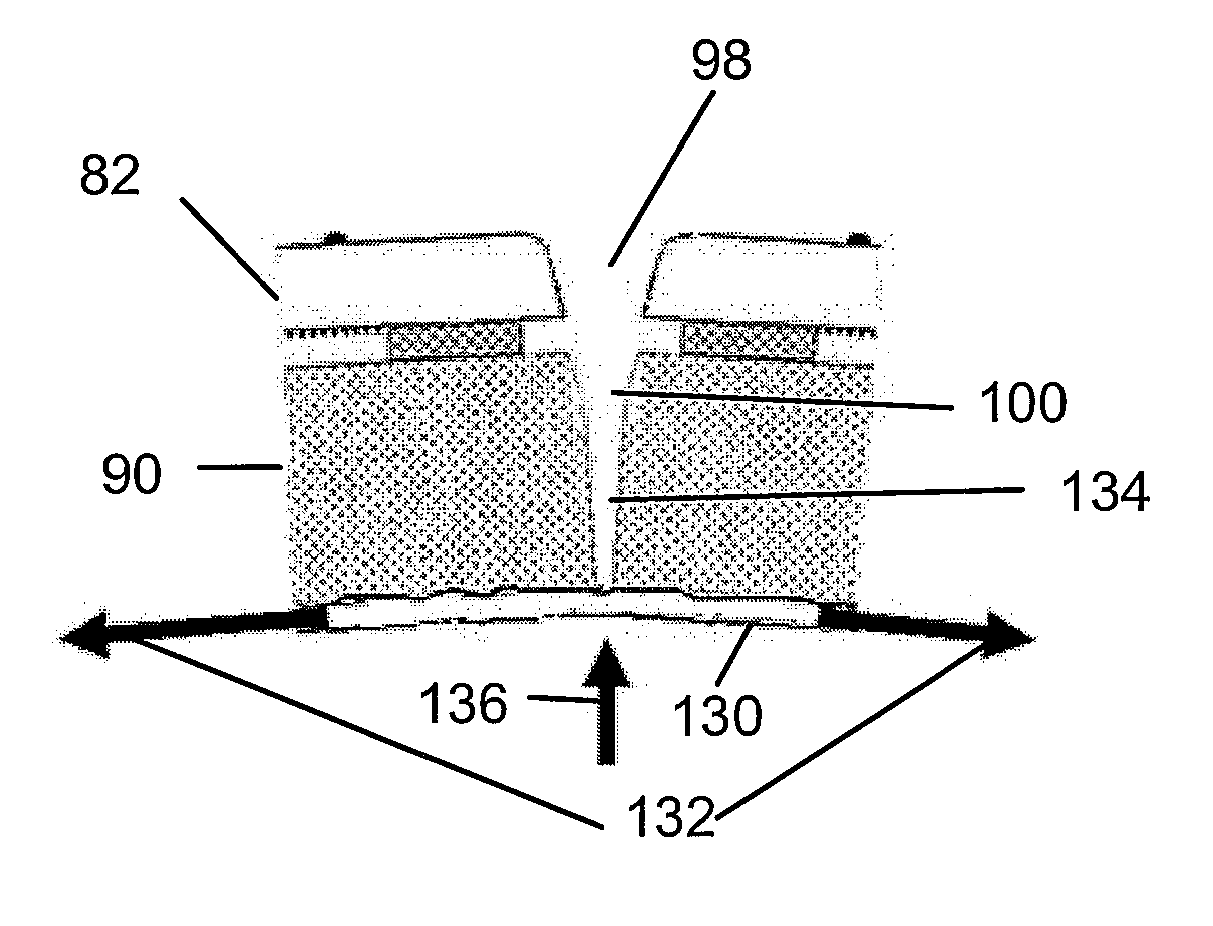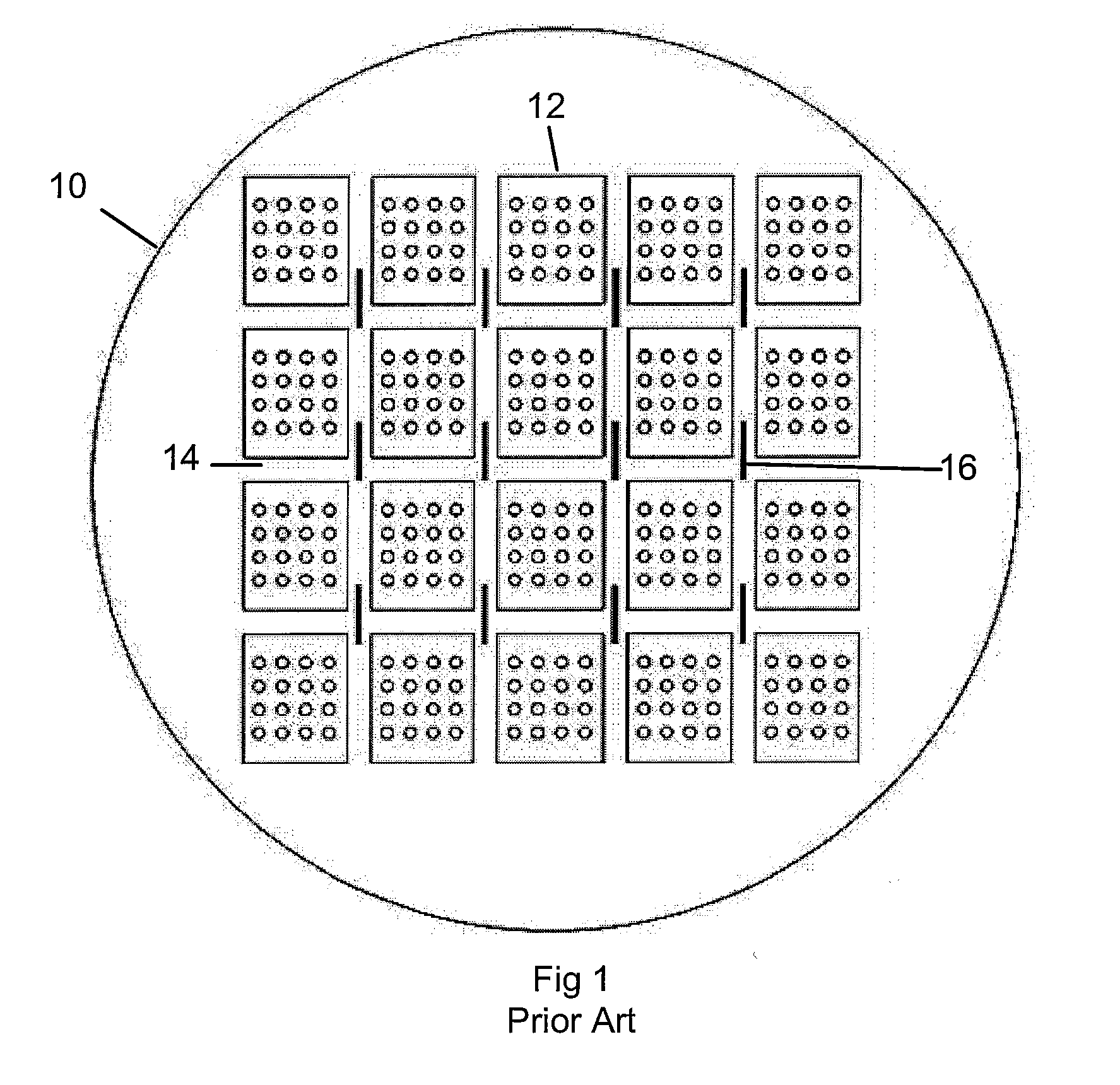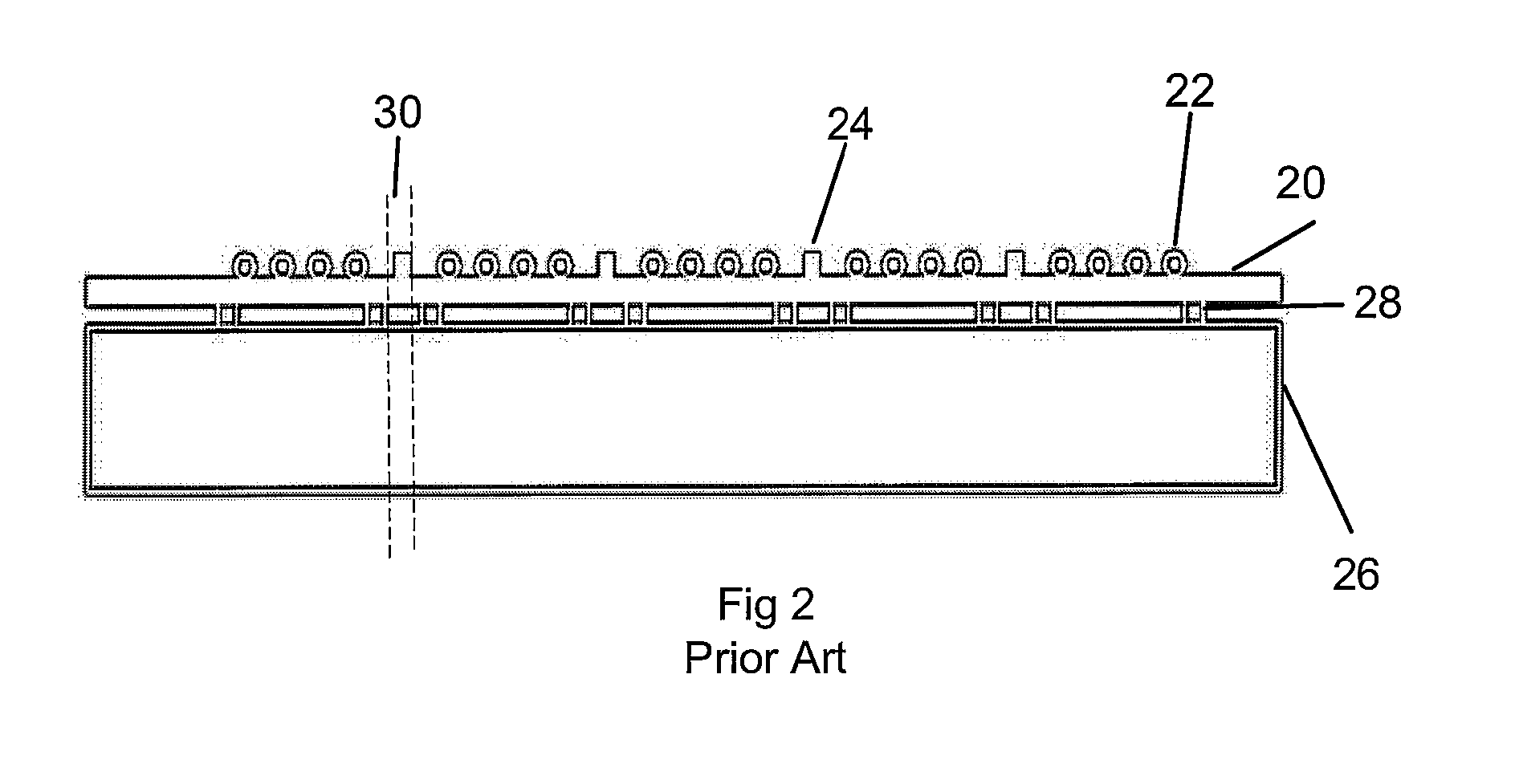Method for laser singulation of chip scale packages on glass substrates
a technology of chip scale and glass substrate, applied in the field of electronic devices singulation, can solve the problems of difficult singulation of compound electronic devices, and achieve the effects of avoiding cracks or chips, reducing the size of streets, and acceptable cutting speeds
- Summary
- Abstract
- Description
- Claims
- Application Information
AI Technical Summary
Benefits of technology
Problems solved by technology
Method used
Image
Examples
Embodiment Construction
[0033]One object of the instant invention is to provide a method for singulation of compound electronic devices. Another object of the instant invention is to provide a method for singulation of compound electronic devices that avoids creating cracks or chips while maintaining acceptable cutting speeds. A further object of the instant invention is to provide a method for singulation of compound electronic devices that minimizes the size of streets. Compound electronic devices are particularly difficult to singulate due to their construction with two or more substrates requiring simultaneous separation to perform singulation. In particular, image sensor devices typically contain both active electronic device substrates such as silicon and transparent protective substrates made of glass or glass-like material, typically with differing thicknesses. One embodiment of the invention disclosed herein uses different separation techniques for different layers in the compound semiconductor de...
PUM
| Property | Measurement | Unit |
|---|---|---|
| travel speed | aaaaa | aaaaa |
| travel speed | aaaaa | aaaaa |
| travel speed | aaaaa | aaaaa |
Abstract
Description
Claims
Application Information
 Login to View More
Login to View More - R&D
- Intellectual Property
- Life Sciences
- Materials
- Tech Scout
- Unparalleled Data Quality
- Higher Quality Content
- 60% Fewer Hallucinations
Browse by: Latest US Patents, China's latest patents, Technical Efficacy Thesaurus, Application Domain, Technology Topic, Popular Technical Reports.
© 2025 PatSnap. All rights reserved.Legal|Privacy policy|Modern Slavery Act Transparency Statement|Sitemap|About US| Contact US: help@patsnap.com



